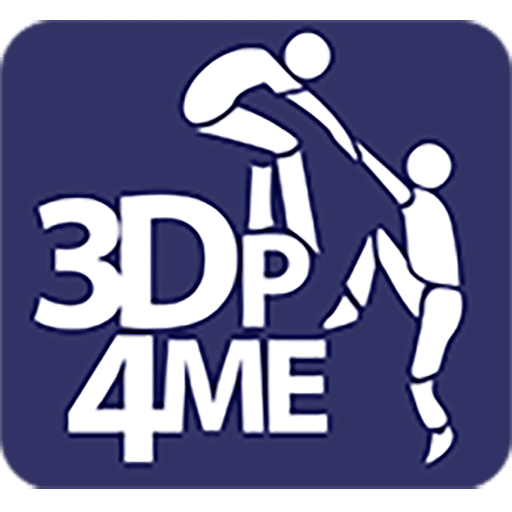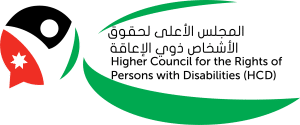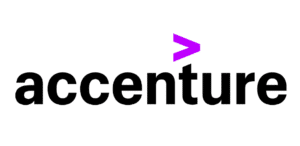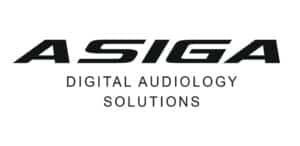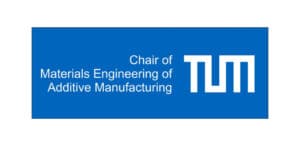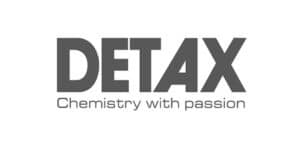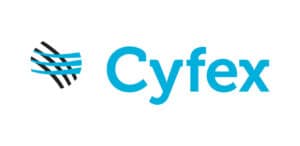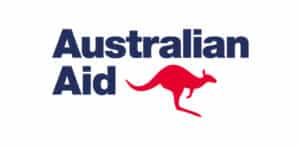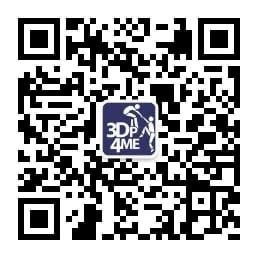Introduction
3DP4ME (“3D Printing For Me”), has made significant strides in its mission to provide innovative healthcare solutions to underserved communities in the Middle East. Established as a US 501(c)(3) in 2017, 3DP4ME is committed to fostering sustainable healthcare through patient-specific, technology-driven interventions and has worked tirelessly to navigate the complex process of obtaining government approvals from both the USA and Jordan to carry out their work in the Middle East. Registered in Jordan, 3DP4ME has its service and production facility in the capital, Amman.
3DP4ME is a US-based non-profit tech startup operating in the Middle East. They combine cutting-edge technology with a humanitarian focus. Their vision is to establish a state-of-the-art advanced manufacturing facility equipped with 3D scanning, design, and printing capabilities to provide scalable solutions for a range of assistive devices to those in need.
3DP4ME’s first project, known as The Hearing Express, demonstrates their commitment to enhancing accessibility to hearing aids for underserved communities in Jordan, with a primary focus on children with diagnosed permanent hearing loss. In addition to providing custom-fitted hearing aids, 3DP4ME recognizes the importance of follow-up care and support through building new infrastructure and relationships with existing service providers. Given the first target population is children with permanent hearing loss, 3DP4ME includes in their service provision essential speech therapy sessions to empower each beneficiary, enabling them to actively engage and thrive in their educational development. 3DP4ME has already made a significant impact by serving 52 children with custom-fitted hearing aids in an initial pilot conducted February – May 2023. These 52 children were identified through relationships with existing service providers and known to lack the means to obtain hearing aids through the commercial channel. These children had their hearing tested at Queen Noor Hospital, and were referred to 3DP4ME for direct ear scanning, onsite fabrication of silicone earmolds, and fitting with new (warrantied) Behind-the-Ear (BTE) hearing aids by a partner audiologist.
In the upcoming year, based on the lessons learned and the substantial success of their inaugural pilot with 52 children, 3DP4ME is now planning to expand their current initiative. As they strive to reach more individuals in need and navigate the challenges posed by limited resources and available solutions in Jordan, the need for expansion becomes ever more urgent. By advancing and accelerating their initiatives, 3DP4ME holds the power to reshape healthcare accessibility on a grander stage, instilling hope and catalyzing transformative change in the lives of countless more people across the region.
Problem Statement and Need
Hearing loss poses a significant and multifaceted challenge in Jordan, influenced by factors such as chronic middle ear infections, ototoxicity, consanguinity resulting in higher incidence of genetic conditions, and occupational and non-occupational sound exposures. The prevalence of hearing loss in the country demands urgent attention due to its wide-ranging ramifications. Insufficient access to quality hearing healthcare leads to compromised educational opportunities, communication difficulties, and social isolation for the affected population. Additionally, hearing loss takes a toll on families and individuals, limiting their livelihoods and prospects for employment.
While the Jordanian government has recognized the importance of addressing this issue and has taken initial steps towards incorporating specialized health services for individuals with disabilities, including hearing loss, significant gaps remain in addressing hearing loss in Jordan. In Jordan, there are only 27 licensed audiologists for a population of more than 11.3 million people (https://files.eric.ed.gov/fulltext/EJ1374952.pdf) , highlighting a huge gap in accessibility to specialized care. In addition, limited awareness and testing concerning hearing loss hinder early detection and intervention. Many individuals possess limited knowledge about hearing loss and the potential to mitigate its consequences. a sense of shame associated with seeking assistance. The scarcity of subsidized providers further obstructs access to essential hearing healthcare services. Furthermore, specialized centers are primarily concentrated in city centers, posing difficulties for individuals residing in peripheral areas or rural regions where affordable and safe transportation options are lacking. The absence of efficient public transportation connections exacerbates the barriers to access, preventing many families from seeking the necessary support.
To improve access to quality hearing healthcare in Jordan, a comprehensive approach is needed. The Jordanian society, perhaps through government oversight, should prioritize early detection by implementing a screening system for hearing loss and expanding efforts to raise awareness and educate the public about hearing loss. Additional steps should be taken to address the gaps in subsidized providers and ensure the localization of specialized centers in peripheral areas to enhance accessibility. It is crucial to ensure that individuals with hearing loss receive the necessary support and interventions to enhance their quality of life and promote their full inclusion in society.
Goals and Objectives
The goal of this project is to improve the quality of life for individuals with hearing loss (with a focus on children) from underserved communities in Jordan by providing comprehensive support, custom-fitted, new (warrantied) hearing aids, speech therapy, and ongoing maintenance and audiological services. Through the implementation of innovative 3D printing technology and collaborative partnerships, the project aims to empower these individuals with hearing loss and promote their overall well-being. The specific objectives for this The Hearing Express project are: 1) Increase access to custom-fitted hearing aids for underserved communities in Jordan, 2) Enhance communication and social skills of vulnerable individuals (especially children), and 3) Foster collaboration and awareness to advocate for comprehensive hearing healthcare in Jordan.
Approach
To comprehensively address hearing loss challenges in Jordan, a collaborative approach with local Jordanian partners and with international non-governmental organizations (INGOs), like 3DP4ME, is paramount. The methodology below outlines steps to provide specialized support while overcoming access barriers:
- Collaborative INGO Efforts: 3DP4ME collaborates with INGOs to identify beneficiaries for specialized support, fostering effective service delivery and expanding interventions. This synergy maximizes impact, facilitates resource-sharing, and promotes best practices.
- Prioritizing a Supportive Environment: 3DP4ME emphasizes a safe, supportive, culturally-informed environment for beneficiaries and their families. Individuals working at 3DP4ME are fully fluent in Jordanian culture, including being fluent in Arabic, and in the cultural norms. This ensures comfort and trust throughout the process, enabling open communication and enhancing overall experiences.
- Innovative Localization Techniques: 3DP4ME employs advanced technology to overcome geographical constraints. Currently, it is extremely time-consuming and expensive to take a physical earmold impression and ship that to an out-of-country earmold lab. Even desktop scanning and sending the earmold impression STL file electronically out-of-country is prohibitively expensive and has a long turnaround time, due to Jordanian customs enforcement. To overcome this barrier to access, 3DP4ME has built an onsite custom earmold lab, with direct ear scanning (using Lantos ear scanner), CAD modeling (using Cyfex software), and 3D printing shells (using XXXX) using DETAX Cocoon material, and injecting with DETAX silicone. In the future, the idea is to go to the patient and conduct a mobile 3D scanner that captures on-site ear measurements, eliminating patient travel needs such as going to refugee camps, or into other inaccessible areas. Currently, site visits are essential, with 3DP4ME covering transportation to ensure access.
- Swift Customization with 3D Printing: Utilizing 3D printing, 3DP4ME swiftly produces customized hearing aid molds. This surpasses slow traditional methods, offering rapid and personalized solutions for beneficiaries’ timely access.
- Comprehensive Support System: Beyond hearing aids, 3DP4ME offers extensive support, including speech therapy sessions. Regular visits monitor progress and impact on the child, caregiver, and the family. Future goals are to incorporate educational audiology, FM remote microphone systems, and Teachers-of-the-Deaf and Hard-of-Hearing in the Jordanian school system.
Activities
From September 2023 to September 2025, 3DP4ME will execute an action plan for comprehensive assistance to individuals with hearing loss, incorporating these steps:
- Raising Awareness: Utilizing social media campaigns and partnerships with international non-governmental organizations (INGOs) and local partners, 3DP4ME will expand awareness in targeted communities.
- Identification and Selection: Employing a meticulous assessment process, 3DP4ME will identify beneficiaries who align with the project’s goals, accounting for individual needs and circumstances.
- Patient Intake Form: Thorough information gathering from selected individuals and their families via a comprehensive intake form will tailor the program to their specific needs.
- Hearing Exams: Expert audiologists from the Institute of Family Health (IFH) will perform hearing exams to determine each individual’s level of hearing loss, guiding subsequent interventions.
- 3D Ear Scanning Days: Individuals and families will visit 3DP4ME’s premises for innovative 3D ear scanning performed by on-site, trained technicians, ensuring precise measurements for custom hearing aid fit. Exceptions apply for infants and young children, who will have a physical earmold impression made by an audiologist; that impression will be desktop scanned at 3DP4ME and will follow the same process for fabrication as those who have direct ear scan.
- Production and Assembly: Utilizing advanced 3D printing technology, 3DP4ME will craft personalized hearing aids efficiently, addressing diverse needs within a short timeframe.
- Hearing Aid Fitting Days: In-house Audiologist will conduct fitting sessions, imparting maintenance training. Rechargeable battery kits will cater to mild to moderate hearing loss, while traditional disposable batteries will serve severe to profound cases.
- Hearing Aid Verification: In-house Audiologist will conduct real ear probe microphone measures, verifying hearing aid gain and optimizing performance.
- Hearing Aid Maintenance: Ongoing maintenance services by in-house Audiologist will ensure hearing aids remain effective and meet evolving individual needs.
- Replacement Ear Molds: Timely ear mold replacements will accommodate physical changes and maintain hearing aid effectiveness.
- Speech Therapy Sessions: The Institute of Family Health (IFH) will provide speech therapy sessions to enhance communication skills and address language challenges.
- Follow-up Home Visits: Subsequent home visits will monitor program progress, gather impact reports, and assess outcomes, promoting the well-being of individuals, children, and families.
Expected Results
The implementation of this project will significantly improve the quality of life for individuals with hearing loss in Jordan through comprehensive support, custom-fitted hearing aids, speech therapy, and ongoing maintenance services. Utilizing advanced 3D printing technology, the project will increase access to customized hearing aids for underserved communities, providing tailored solutions for 200 individuals (with a focus on children). On-site 3D ear scanning and covered transportation costs ensure accessibility. Additionally, the project focuses on enhancing communication and social skills, offering speech therapy sessions to address speech and language difficulties. Regular follow-up visits monitor progress and provide necessary adjustments. Collaborations with INGOs and local partners raise awareness, promote early detection, and advocate for comprehensive hearing healthcare. The project’s expected results include improved access to hearing aids, enhanced communication skills, and increased awareness for comprehensive hearing healthcare, ultimately empowering individuals with hearing loss and improving their overall well-being.
Sustainability and Scalability
Sustainability is a key consideration for 3DP4ME’s project in Jordan, ensuring its long-term impact and continued benefits for individuals with hearing loss. 3DP4ME employs a holistic approach to sustainability that includes several elements.
First, 3DP4ME uses advanced 3D printing technology to enable the production of custom-fitted hearing aids with greater efficiency and scalability. Leveraging this innovative technology improves the accessibility of hearing aids for underserved communities and reduces production costs over time. In addition, 3DP4ME equips local technicians with the skills to provide specialized care to foster self-reliance and expertise within the community. 3DP4ME’s model is sustainable and replicable by design, to ensure ongoing access to high-quality hearing aids for individuals in Jordan.
In addition, the project prioritizes capacity building and knowledge transfer. By collaborating with international non-governmental organizations (INGOs), local partners, audiologists, suppliers, and healthcare professionals, 3DP4ME fosters partnerships that enhance local expertise and resources. This transfer of knowledge and skills ensures the sustainability of the project’s impact, enabling access to thousands of beneficiaries after its completion.
Furthermore, the project’s emphasis on awareness-raising and advocacy for comprehensive hearing healthcare in Jordan contributes to the long-term sustainability of efforts to address hearing loss. By promoting early detection, generating referrals, and sharing success stories, 3DP4ME creates a lasting impact on the public perception of hearing impairment and the importance of personalized interventions. This increased awareness and advocacy can drive policy changes and resource allocation in the healthcare system, leading to sustainable improvements in hearing healthcare services for all individuals in the country.
Moreover, the project’s Monitoring, Evaluation, Accountability, and Learning (MEAL) framework also ensures impact through ongoing feedback, assessment, and adaptation throughout the project lifecycle. By actively involving beneficiaries in the creation of indicators, data collection, analysis, and reporting, 3DP4ME fosters a participatory approach that strengthens the project’s effectiveness and relevance. This iterative process of learning and improvement enhances the sustainability of the project by continuously adapting interventions based on real-time feedback and evolving needs.
By leveraging innovative technology, building local capacity, advocating for comprehensive hearing healthcare, and implementing robust monitoring and evaluation practices, 3DP4ME ensures its long-term impact, scalability, and continued benefits for individuals (with a focus on children) with hearing loss in Jordan. Through these sustainability strategies, 3DP4ME aims to create lasting change in the lives of beneficiaries and contribute to a more inclusive and supportive healthcare system in the country.
It took us 5 years to get approved in Jordan. We started operations in Jordan, during 2020.
Step 1: Internal Capacity in Jordan
Hire and train key local Jordanian staff members to provide needed clinical and production capacity to support the expansion to retail services that will provide an ongoing financial contribution to the overall model. With lower-cost core staff, in addition to the demonstrated margins on expanded retail hearing healthcare services, we expect that our operating model will contribute an ongoing positive contribution (profit) that allows us to support our core operations, while also helping to subsidize our support of vulnerable populations. Over time, we envision three much-needed services that not only expand our presence in Jordan, but also shift our resource model from philanthropy to more market-driven contributions. Key to our plans is our ability to attract partners ranging from INGOs to local healthcare professionals who in a cost-effective way allow us to expand our reach while maintaining an efficient operating model.
Step 2: Audiology Clinic
Audiology services in Jordan are limited, especially outside of the capital of Amman. Following approval from the Ministry of Health, we plan to hire a local audiologist, install an audiometric test booth with diagnostic equipment in our existing clinic space, and with the initial support of international experts, ensure that our 3D technicians effectively deliver across the full production cycle.
Supporting Online Speech Therapy Modules in Arabic
We are committed to ensuring our patients receive access to speech therapy services following our time with them. To do so, we are designing a scalable approach that will be customized to local family and children’s needs. Yara Harb, is a Listening and Spoken Language Specialist (LSLS Cert. AVT), as well as a Speech and Language Pathologist and will be leading our collaboration with Deaf Kids Code (USA), to design virtual modules for parents of kids with hearing loss. Yara specializes in early intervention for children with hearing loss; Yara’s worked with these families for nearly a decade in both Arabic and English. Currently, Yara mentors Arabic-speaking professionals and is a member of the LSL Academy’s board of directors.
We have recruited 11 volunteers who are Speech and Language professionals; all from the Levantine area. Our potential timeline is to complete the first module by later in the fall of 2024. The Levantine dialect will allow us to support and reach families in Palestine, Jordan, Lebanon, and Syria.
Partners
In addition to its start-up technology partners including BASF, Accenture, Intel and others who have supported the development of 3DP4ME’s service and 3D printing production model, 3DP4ME has established additional partnerships in support of its future expansion.
The Higher Council of the Rights of People with Disabilities (HCD) is a crucial partner in the project, advocating for inclusivity, accessibility, and equal opportunities for people with disabilities in Jordan. Their expertise and commitment to creating an enabling environment contribute significantly to improving the quality of life for individuals with hearing loss and promoting inclusivity in Jordan.
The King Hussein Foundation (KHF), The King Hussein Foundation (KHF), specifically through its Institute for Family Health (IFH), is a valuable partner in the project, delivering essential healthcare services to underserved populations. By integrating hearing healthcare into their network, the IFH ensures individuals with hearing impairments have access to support and interventions. Their contribution includes providing speech therapy sessions to each individual, strengthening the project’s comprehensive approach and promoting the well-being of individuals with hearing loss.
Budget
The budget for this project, totaling $695,000 (USD) for 200 individuals with a focus on children, signifies a strategic commitment towards the future of individuals with hearing loss in Jordan. It serves as a cornerstone for sustainability, scalability, and comprehensive impact. This financial plan facilitates high-quality services, individualized interventions, and lasting solutions. By harnessing cutting-edge 3D printing technology, the budget enables the creation of custom hearing aids, finely tuned to individual needs, ensuring both efficacy and comfort. Moreover, it strongly supports a holistic approach, encompassing speech therapy, maintenance services, and follow-up visits.
This budget, however, signifies more than financial support. It embodies an investment in sustainability and scalability, with a substantial portion allocated to capacity building in Jordan. This investment empowers local audiologists, local partners, suppliers, and healthcare professionals, fostering knowledge transfer and enhancing skills within the community. This cascading effect amplifies the project’s reach and longevity, enabling the project to reach thousands of beneficiaries even after the project’s completion.
Ultimately, this budget dismantles financial barriers, making life-changing interventions accessible to underserved communities. It paves the way for individuals to flourish and meaningfully participate in their communities, charting a brighter and more inclusive future for more children.
